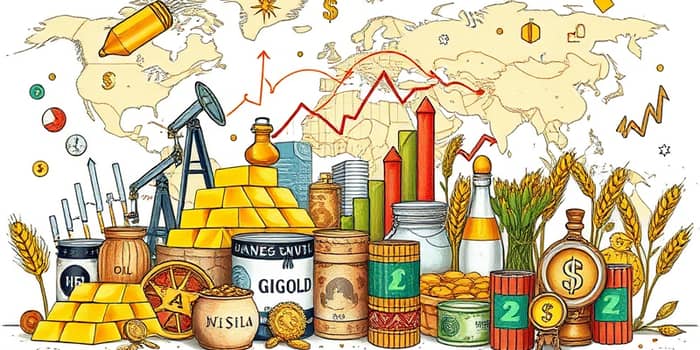
In an ever-changing financial landscape, understanding the forces that drive commodity prices can unlock new opportunities and safeguard investments. This article offers a comprehensive exploration of the external factors influencing commodity prices and equips readers with actionable strategies to apply fundamental analysis effectively.
Fundamental analysis evaluates the broader environment affecting a commodity’s value, rather than relying solely on price charts. By examining supply, demand, economic indicators, and geopolitical developments, analysts seek the intrinsic value estimation techniques necessary to anticipate future price movements.
Unlike technical analysis, which focuses on historical price patterns and market sentiment, fundamental analysis delves into the geopolitical events and economic indicators that shape long-term trends. The ultimate goal is to assess the intrinsic value of a commodity and identify when market prices diverge from their true worth.
Commodities respond to a wide range of forces. Understanding these variables allows analysts to forecast potential shortages or surpluses.
Demand is driven by consumption patterns, industry needs, and macroeconomic health. The interplay of these forces often determines whether markets experience shortages or gluts.
At the heart of fundamental analysis lie the concepts of supply and demand. When demand outstrips supply, markets enter a deficit, often triggering price rallies. Conversely, a surplus—when supply exceeds demand—tends to suppress prices.
Markets seek equilibrium, a state where supply equals demand and prices stabilize. Analysts monitor inventory reports and consumption trends to identify potential shifts toward deficit, surplus, or equilibrium scenarios.
Reliable information is the cornerstone of sound analysis. Key providers offer timely data on production, stock levels, and consumption.
Analysts use spreadsheets, visualization tools, and statistical techniques—mean, variance, standard deviation—to gauge price volatility and detect emerging trends.
While fundamental analysis unpacks the economic rationale behind price movements, technical analysis interprets charts and market psychology. Both approaches serve different purposes but can complement each other.
1. Gather data from reputable agencies and market intelligence sources, ensuring accuracy and timeliness.
2. Analyze historical and current supply/demand trends using charts and statistical measures.
3. Monitor relevant news—weather developments, policy changes, and geopolitical updates.
4. Project future movements by modeling how anticipated production and consumption levels may shift the market balance.
Fundamental analysis faces inherent uncertainties. Sudden weather disasters or geopolitical crises can derail even the most robust forecasts.
Data reliability is another concern—some regions may underreport production or lag in inventory disclosures. Moreover, fundamental factors often drive long-term trends rather than immediate price swings, requiring patience and a strategic outlook.
In the crude oil market, OPEC production decisions and U.S. shale output directly impact global supply. Weekly inventory reports from the EIA often trigger sharp price movements.
For gold, shifts in central bank reserves, inflation expectations, and dollar strength play major roles. A 1% drop in the dollar index can boost gold prices as investors seek value preservation.
Agricultural commodities illustrate how weather and trade policies interact. Drought years can halve crop yields and spark price spikes, while export tariffs can reroute trade flows and reshape demand.
Many market participants blend both methodologies—using fundamental analysis to identify undervalued or overvalued commodities and technical analysis to fine-tune entry and exit points. This integrated strategy helps manage risk and improve timing.
Fundamental analysis offers a powerful lens to decode the complex interplay of forces driving commodity markets. By mastering supply and demand dynamics, monitoring economic indicators, and staying attuned to geopolitical developments, investors can make informed decisions grounded in data and insight.
Embracing both qualitative reasoning and quantitative tools, analysts can anticipate long-term trends and seize opportunities while navigating the inherent uncertainties of global markets.
References













